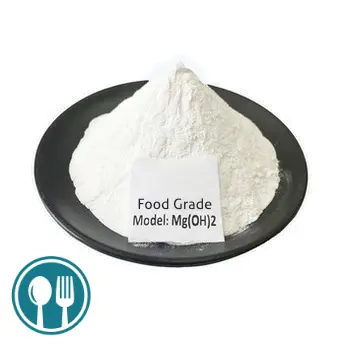Some of the most common applications for food grade magnesium hydroxide include:
Anti-Caking Agent: Food-grade magnesium hydroxide can be used to prevent powdered foods from clumping. It is commonly used in milk powder, wheat flour, powdered sugar and other dry mixes.
Food acidity regulator: Food-grade magnesium hydroxide can be used to adjust the acidity of food. It is commonly used in acidic foods such as ketchup, salad dressings and citrus juices.
Food Nutritional Supplements: Food-grade magnesium hydroxide is a good source of magnesium, a mineral important for human health. It is often added to fortified foods and drinks, such as breakfast cereals and juices.

Food Clarifier: Food-grade magnesium hydroxide can be used to clarify juices and other beverages. It works by binding to proteins and other impurities in the juice and then removing them from the liquid.

Food leavening agent: Food-grade magnesium hydroxide can be used as a leavening agent in some baked goods. It reacts with acidic ingredients, such as vinegar or lemon juice, to produce carbon dioxide, which creates a fluffy texture in the finished product.

Food-grade magnesium hydroxide is considered generally recognized as safe (GRAS) by the U.S. Food and Drug Administration (FDA) for use in food. It has been used in food products for many years with no known safety issues.
Some potential side effects of magnesium hydroxide include:
diarrhea
stomach cramps
nausea
Vomit
If you experience any of these side effects, stop taking magnesium hydroxide and consult your doctor.

